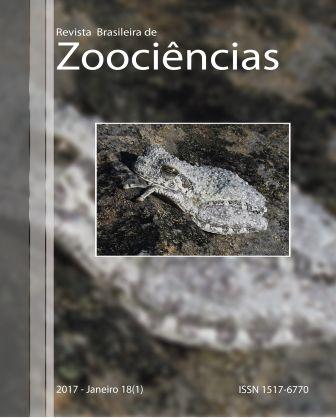Bats (Mammalia: Chiroptera) from a remnant of Atlantic Forest in Pernambuco, northeastern Brazil
DOI:
https://doi.org/10.34019/2596-3325.2017.v18.24583Resumo
The RPPN Carnijó (08° 07’ 07” S, 35° 05’ 32” N) is a 25 hectare fragment of Atlantic Forest located in the municipality of Moreno, Pernambuco. Bats were sampled at this site during a total of 19 months between 2006 and 2008. Four mist-nets were set for six hours each night along trails, the forest edge, natural clearings, and over watercourses, while roosts were located during daytime searches. A total of 518 specimens were captured during 43 nights, representing 20 species in 16 genera. Total species richness was estimated to be 25.7 ± 2.0, and diversity was H’ = 2.07. The family Phyllostomidae predominated, with 98% (N = 509) of the specimens captured. The species recorded represent 28% of the known chiropteran fauna of the state of Pernambuco. The results indicate that the reserve may play a fundamentally important role in the maintenance of local biodiversity by acting as a “stepping stone” linking the larger fragments within the local landscape.Downloads
Não há dados estatísticos.
Downloads
Publicado
2017-04-06
Edição
Seção
Artigos



